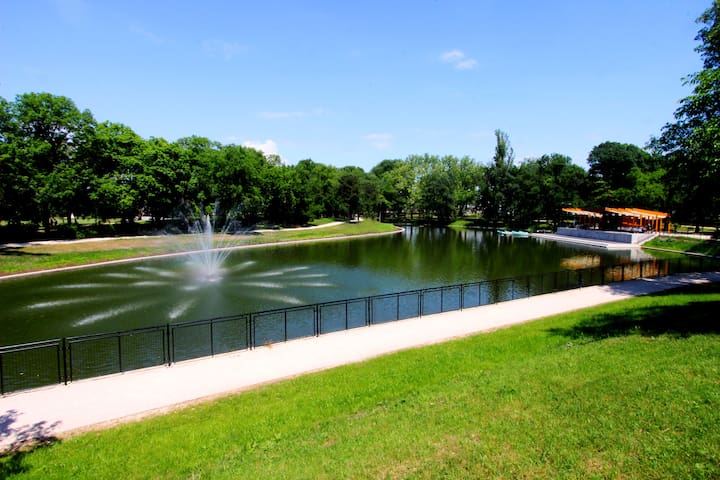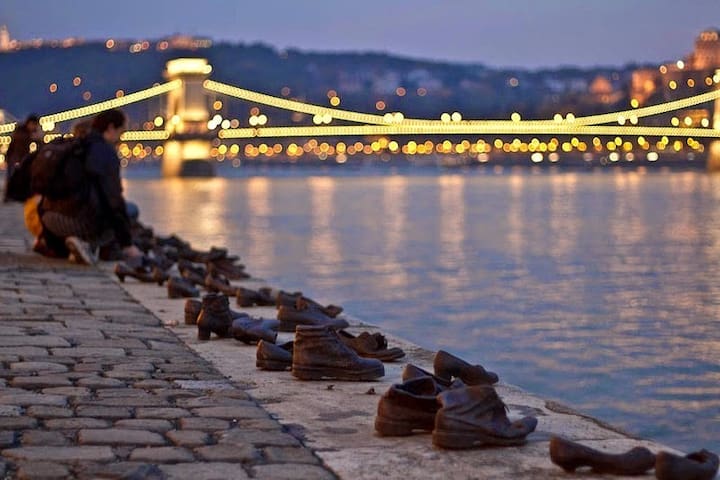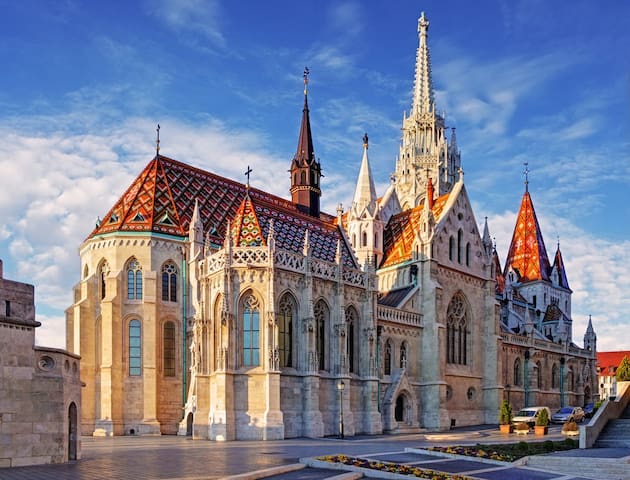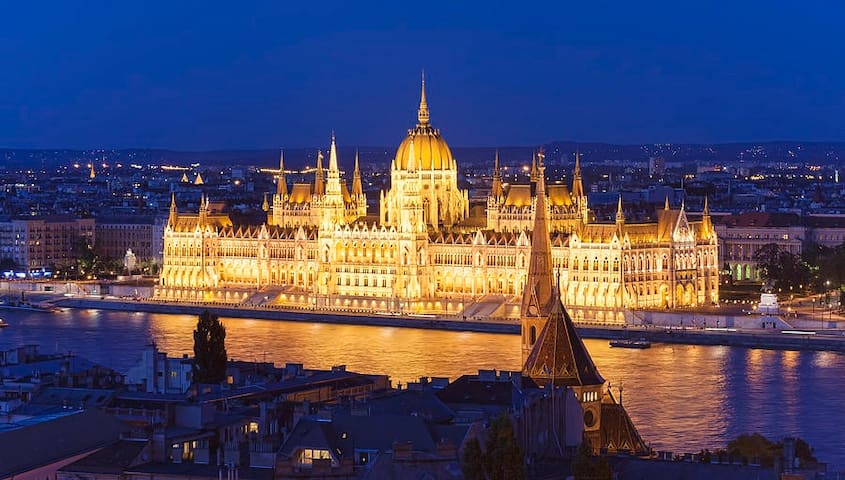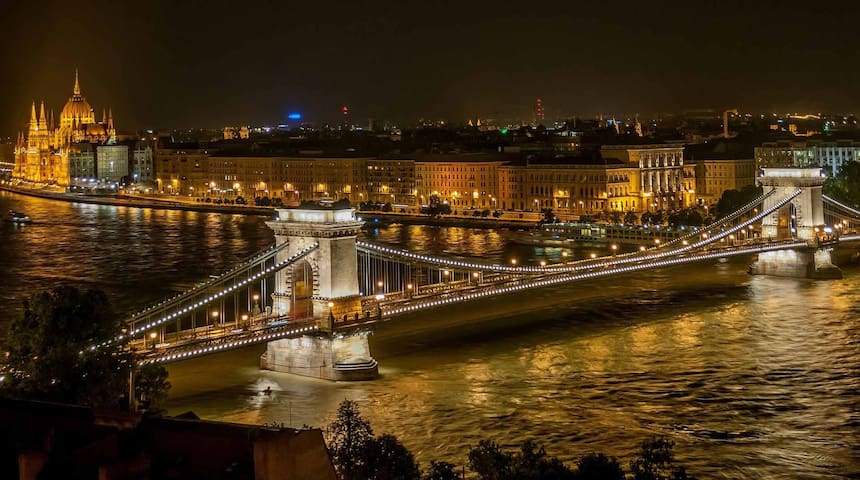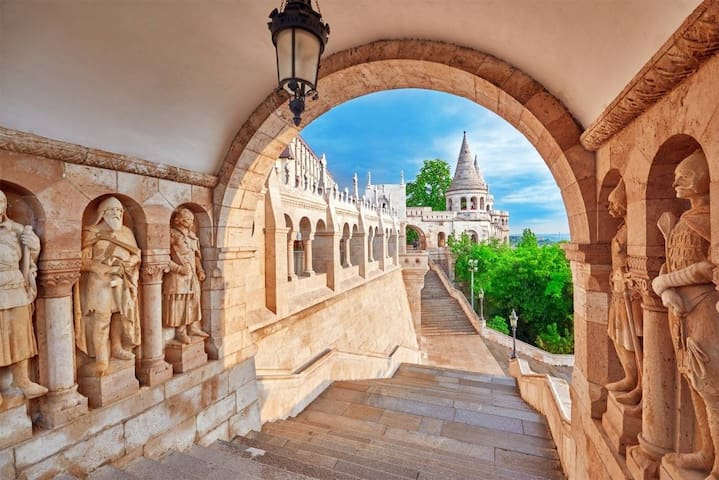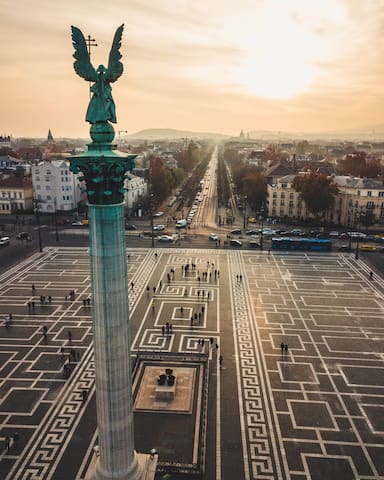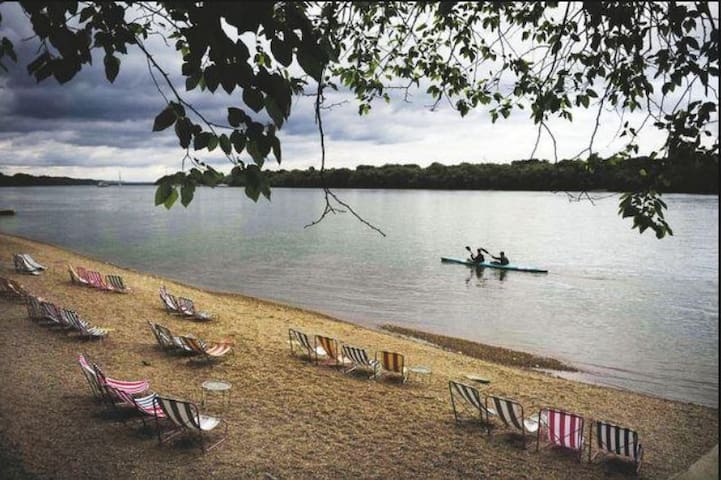Places to eat a good meal!
Szegedi Halászcsárda
Good Hungarian dishes, such as the famous goulash soup. :)
The Grund
30 Nagy Templom utcaThe best place if you want to eat a good hamburger or dance all night!
Black Cab Burger
46 Mester u.Wanna eat a killer burger? This is the right place for that!
Near Supermarkets
Spar
1 Mester u.And yet another (but bigger) local store.
Milán Csemege
4 Haller u.Tiny little local shop (open 0-24!)
Must See
St. Stephen’s Basilica (‘Szent István Bazilika’ in Hungarian) is the largest church in Budapest. Planning and construction took 54 years. If you visit this landmark, don't miss the rooftop viewpoint!
1262 現地メンバーのおすすめ
セント・ステファン大聖堂
1 Szent István térSt. Stephen’s Basilica (‘Szent István Bazilika’ in Hungarian) is the largest church in Budapest. Planning and construction took 54 years. If you visit this landmark, don't miss the rooftop viewpoint!
t 528 metres, leafy János-hegy (‘János Hill’) is the highest point in Budapest. Its summit is crowned by the Erzsébet-kilátó (‘Elizabeth Lookout Tower’), named after revered Habsburg Empress Elisabeth of Austria. Built in 1910 according to a design by Frigyes Schulek of Fishermen’s Bastion fame, the tower was completely rebuilt in the early 2000s. A 100-step spiral staircase gives access to the upper tier of this wedding-cake construction, and its views stretching as far as 80 kilometres and the High Tatra mountains on a clear day. The easiest way to reach the tower is by taking the Chairlift to its top terminus or the Children’s Railway to János-hegy, then prepare yourself for a ten-minute calf-crunching walk.
45 現地メンバーのおすすめ
エリザベス展望台
t 528 metres, leafy János-hegy (‘János Hill’) is the highest point in Budapest. Its summit is crowned by the Erzsébet-kilátó (‘Elizabeth Lookout Tower’), named after revered Habsburg Empress Elisabeth of Austria. Built in 1910 according to a design by Frigyes Schulek of Fishermen’s Bastion fame, the tower was completely rebuilt in the early 2000s. A 100-step spiral staircase gives access to the upper tier of this wedding-cake construction, and its views stretching as far as 80 kilometres and the High Tatra mountains on a clear day. The easiest way to reach the tower is by taking the Chairlift to its top terminus or the Children’s Railway to János-hegy, then prepare yourself for a ten-minute calf-crunching walk.
Orczy Park is one of the largest public green spaces in the inner districts of Budapest. After two years of renovation, it reopened in 2018, with 26 hectares to lay your picnic blanket on. Between Klinikák and Nagyvárad tér metro stops, there is a lake suitable for romantic boat rides and a playground for the little ones. You can also exercise here on the running track or at the outdoor gym. The area is usually bustling with students thanks to the nearby campus of the National University of Public Service.
34 現地メンバーのおすすめ
オルチ公園
1 Orczy útOrczy Park is one of the largest public green spaces in the inner districts of Budapest. After two years of renovation, it reopened in 2018, with 26 hectares to lay your picnic blanket on. Between Klinikák and Nagyvárad tér metro stops, there is a lake suitable for romantic boat rides and a playground for the little ones. You can also exercise here on the running track or at the outdoor gym. The area is usually bustling with students thanks to the nearby campus of the National University of Public Service.
The Shoes on the Danube Bank is a memorial statue by film director Can Togay and sculptor Gyula Pauer, created to honour the people killed by Fascist militiamen in Budapest during World War II. The installation is made up of 60 pairs of period-appropriate iron shoes, representing the victims who had to take their shoes off before execution, leaving them behind on the riverbank. On cast iron plaques alongside, the following text is written in Hungarian, English and Hebrew: “To the memory of the victims shot into the Danube by Arrow Cross militiamen in 1944–45. Erected 16 April 2005”. In 2017 the statue was ranked second among the world’s most fascinating public sculptures by America’s prestigious Architectural Digest magazine.
167 現地メンバーのおすすめ
ドナウ川遊歩道の靴
Idősebb Antall József rakpartThe Shoes on the Danube Bank is a memorial statue by film director Can Togay and sculptor Gyula Pauer, created to honour the people killed by Fascist militiamen in Budapest during World War II. The installation is made up of 60 pairs of period-appropriate iron shoes, representing the victims who had to take their shoes off before execution, leaving them behind on the riverbank. On cast iron plaques alongside, the following text is written in Hungarian, English and Hebrew: “To the memory of the victims shot into the Danube by Arrow Cross militiamen in 1944–45. Erected 16 April 2005”. In 2017 the statue was ranked second among the world’s most fascinating public sculptures by America’s prestigious Architectural Digest magazine.
A perfect spot for a romantic rendezvous, the Tomb of Gül Baba is surrounded by beautiful gardens, recently renovated and reopened. The landmark honours Gül Baba, an Ottoman-era poet and philosopher who died shortly after the Turkish conquest of Buda. From his statue, a panoramic view stretches all the way to the Danube. The walkways up to the site, near the Buda foot of Margaret Bridge, have also been revamped.
91 現地メンバーのおすすめ
Gül Baba and Rosegarden
14 Mecset u.A perfect spot for a romantic rendezvous, the Tomb of Gül Baba is surrounded by beautiful gardens, recently renovated and reopened. The landmark honours Gül Baba, an Ottoman-era poet and philosopher who died shortly after the Turkish conquest of Buda. From his statue, a panoramic view stretches all the way to the Danube. The walkways up to the site, near the Buda foot of Margaret Bridge, have also been revamped.
The Church of Our Lady, better known as Matthias Church (Mátyás-templom) looks back on an exceptionally long history and is the second best known church of Budapest after St. Stephen’s Basilica. It was built in 1015, shortly after the country’s conversion to the Christian faith. It was rebuilt in gothic style in the 14th century, and was yet again renewed in the 19th century in harmony with the designs by Frigyes Schulek. Thanks to its latest reconstruction between 2006-2013, it now stands in its old glory again. The building is a great example of Central-European gothic style. Its facade is adorned with rich ornamentation, sculptures and reliefs. The interior is dominated by wood, gold and painted walls.
421 現地メンバーのおすすめ
マーチャーシュ聖堂
2 Szentháromság térThe Church of Our Lady, better known as Matthias Church (Mátyás-templom) looks back on an exceptionally long history and is the second best known church of Budapest after St. Stephen’s Basilica. It was built in 1015, shortly after the country’s conversion to the Christian faith. It was rebuilt in gothic style in the 14th century, and was yet again renewed in the 19th century in harmony with the designs by Frigyes Schulek. Thanks to its latest reconstruction between 2006-2013, it now stands in its old glory again. The building is a great example of Central-European gothic style. Its facade is adorned with rich ornamentation, sculptures and reliefs. The interior is dominated by wood, gold and painted walls.
The Gothic outline of Parliament is one of Budapest’s most familiar landmarks, dominating an elegant curve of the Danube close to central Pest. This architectural masterpiece was designed by Imre Steindl to stand 96 metres tall, in line with the Hungarian millennial celebrations of 1896, when it was inaugurated. At the time, it presided over a nation that then extended as far as the Adriatic. Still part of the largest building in Hungary, many of its 691 rooms today remain unused though the ornamental grandeur of its 29 staircases, frescoes, half-a-million precious stones and 40 kilograms of gold continue to impress sightseers.
1905 現地メンバーのおすすめ
ハンガリー国会議事堂
1-3 Kossuth Lajos térThe Gothic outline of Parliament is one of Budapest’s most familiar landmarks, dominating an elegant curve of the Danube close to central Pest. This architectural masterpiece was designed by Imre Steindl to stand 96 metres tall, in line with the Hungarian millennial celebrations of 1896, when it was inaugurated. At the time, it presided over a nation that then extended as far as the Adriatic. Still part of the largest building in Hungary, many of its 691 rooms today remain unused though the ornamental grandeur of its 29 staircases, frescoes, half-a-million precious stones and 40 kilograms of gold continue to impress sightseers.
The Széchenyi Chain Bridge is Budapest’s most famous landmark. It is named after the main facilitator of its construction, the great Hungarian statesman and Anglophile Count István Széchenyi.
795 現地メンバーのおすすめ
チェーン橋
Széchenyi LánchídThe Széchenyi Chain Bridge is Budapest’s most famous landmark. It is named after the main facilitator of its construction, the great Hungarian statesman and Anglophile Count István Széchenyi.
Vajdahunyad Castle was built in Városliget in 1908. Basing his design on the classic Transylvanian Gothic model, Ignác Alpár created it for the millennial celebrations of 1896 with the goal of embodying 1,000 years of Hungarian architecture. Originally, it was a temporary construction of wood, but it was so popular that it was recreated in stone and brick by 1908. The castle today is home to the Museum of Agriculture. The building stands on an artificial island in the Városliget Lake and is accessible via four bridges. The statue of medieval chronicler Anonymous sits in its interior courtyard.
444 現地メンバーのおすすめ
ヴァイダフニャディ城
Vajdahunyad sétányVajdahunyad Castle was built in Városliget in 1908. Basing his design on the classic Transylvanian Gothic model, Ignác Alpár created it for the millennial celebrations of 1896 with the goal of embodying 1,000 years of Hungarian architecture. Originally, it was a temporary construction of wood, but it was so popular that it was recreated in stone and brick by 1908. The castle today is home to the Museum of Agriculture. The building stands on an artificial island in the Városliget Lake and is accessible via four bridges. The statue of medieval chronicler Anonymous sits in its interior courtyard.
Spread atop Castle Hill, the Castle District is a key Budapest attraction and a UNESCO World Heritage site. Easily reached by the funicular from Clark Ádám tér on the Buda side of Chain Bridge, the Castle District permanently attracts gaggles of tourists, who mill around the focal square of Szentháromság tér and the two most popular sights of Matthias Church and Fishermen’s Bastion.
812 現地メンバーのおすすめ
ブダ城
2 Szent György térSpread atop Castle Hill, the Castle District is a key Budapest attraction and a UNESCO World Heritage site. Easily reached by the funicular from Clark Ádám tér on the Buda side of Chain Bridge, the Castle District permanently attracts gaggles of tourists, who mill around the focal square of Szentháromság tér and the two most popular sights of Matthias Church and Fishermen’s Bastion.
Connecting the Danube bank with the Castle Hill, the Funicular (Sikló) was first put into service in 1870. Back then, it carried clerks and public officials up to do a day’s work in Buda Castle. Destroyed during the war, it wasn’t restored until 1986, when it was given a vintage appearance and soon admitted to the list of UNESCO World Heritage sites as a distinctive element of the Danube embankment. It runs on a steep, 95-metre slope, elevating 50 metres along its way. Although the Funicular is operated by the Budapest Transport Corporation, ordinary public-transport tickets and passes are not valid and you’ll have to join the inevitable queue to buy a single (1,200 HUF) or return (1,800 HUF). The two cars, Margit and Gellért, are connected as counterweights: while one runs uphill, the other comes down.
163 現地メンバーのおすすめ
Budapest Castle Hill Funicular station
Clark Ádám térConnecting the Danube bank with the Castle Hill, the Funicular (Sikló) was first put into service in 1870. Back then, it carried clerks and public officials up to do a day’s work in Buda Castle. Destroyed during the war, it wasn’t restored until 1986, when it was given a vintage appearance and soon admitted to the list of UNESCO World Heritage sites as a distinctive element of the Danube embankment. It runs on a steep, 95-metre slope, elevating 50 metres along its way. Although the Funicular is operated by the Budapest Transport Corporation, ordinary public-transport tickets and passes are not valid and you’ll have to join the inevitable queue to buy a single (1,200 HUF) or return (1,800 HUF). The two cars, Margit and Gellért, are connected as counterweights: while one runs uphill, the other comes down.
A faux historic landmark in the Castle District, the ornate confection of the Fishermen’s Bastion (Halászbástya) was conceived to offset nearby Matthias Church rebuilt by the same architect, Frigyes Schulek. Using the remaining sections of the fortress that ran along this panoramic edge of Castle Hill, Schulek created an elegant walkway topped with seven cone-topped towers, symbolising the Magyar chieftains who settled in this part of the Carpathian Basin in the late 800s. Some 140 metres long, the bastion, named after the fishermen’s guild who defended this section of the wall in the Middle Ages, provides outstanding views of the Danube and Pest cityscape. The lower section is free to enter, as is the whole complex mid-October and mid-March, and from 8pm to 9am year-round, while 1,000-forint admission is charged to enter the upper towers mid-March to mid-October, between 9am and 8pm daily.
666 現地メンバーのおすすめ
漁夫の砦
Szentháromság térA faux historic landmark in the Castle District, the ornate confection of the Fishermen’s Bastion (Halászbástya) was conceived to offset nearby Matthias Church rebuilt by the same architect, Frigyes Schulek. Using the remaining sections of the fortress that ran along this panoramic edge of Castle Hill, Schulek created an elegant walkway topped with seven cone-topped towers, symbolising the Magyar chieftains who settled in this part of the Carpathian Basin in the late 800s. Some 140 metres long, the bastion, named after the fishermen’s guild who defended this section of the wall in the Middle Ages, provides outstanding views of the Danube and Pest cityscape. The lower section is free to enter, as is the whole complex mid-October and mid-March, and from 8pm to 9am year-round, while 1,000-forint admission is charged to enter the upper towers mid-March to mid-October, between 9am and 8pm daily.
The Várkert Bazaar (Castle Garden Bazaar) is a restored neo-Renaissance complex on the side of the Castle Hill that overlooks the Buda riverfront at the foot of the Royal Palace, which can be reached by escalator. It was built between 1875 and 1883 according to the plans of one of Hungary’s greatest architects, Miklós Ybl. Originally an arcade of boutiques, the building suffered serious damage during World War II before it became the Youth Park, where Hungary’s most famous pop and rock bands played from the 1960s to the 1980s. Closed in 1984, and became neglected, and even marked for demolition. Now, this lofty series of promenades houses a new cultural space with exhibition areas, a neo-Renaissance flower garden, a park and a cinema.
128 現地メンバーのおすすめ
城の庭園バザール
2-6 Ybl Miklós térThe Várkert Bazaar (Castle Garden Bazaar) is a restored neo-Renaissance complex on the side of the Castle Hill that overlooks the Buda riverfront at the foot of the Royal Palace, which can be reached by escalator. It was built between 1875 and 1883 according to the plans of one of Hungary’s greatest architects, Miklós Ybl. Originally an arcade of boutiques, the building suffered serious damage during World War II before it became the Youth Park, where Hungary’s most famous pop and rock bands played from the 1960s to the 1980s. Closed in 1984, and became neglected, and even marked for demolition. Now, this lofty series of promenades houses a new cultural space with exhibition areas, a neo-Renaissance flower garden, a park and a cinema.
One of the city’s main landmarks and the gateway to the City Park or Városliget, Heroes’ Square (Hősök tere) bookends elegant Andrássy út. Construction began in 1896, when citywide developments marked the millennial celebrations of the foundation of the Hungarian state. Two colonnades display 14 emblematic figures from Hungarian history, and form a semi-circle around the centrepiece column, which itself is surrounded by the seven original Magyar chieftains and topped by the Archangel Gabriel.
942 現地メンバーのおすすめ
英雄広場
Hősök tereOne of the city’s main landmarks and the gateway to the City Park or Városliget, Heroes’ Square (Hősök tere) bookends elegant Andrássy út. Construction began in 1896, when citywide developments marked the millennial celebrations of the foundation of the Hungarian state. Two colonnades display 14 emblematic figures from Hungarian history, and form a semi-circle around the centrepiece column, which itself is surrounded by the seven original Magyar chieftains and topped by the Archangel Gabriel.
Yummy Breakfast
Do you like milk products, cocoa drinks, fresh and healthy sandwiches and yummy yogurts? This place is for you, then!
45 現地メンバーのおすすめ
Cserpes Tejivó
1082 Corvin közDo you like milk products, cocoa drinks, fresh and healthy sandwiches and yummy yogurts? This place is for you, then!
Relax Places
When it comes to parks it’s never enough, especially when we are talking about the capital city. We always need a place where we can take our sandals off and walk barefoot on the grass, where we can lay down underneath a tree. We also need a sandy shore on the bank of the Danube and of course a refreshing spritzer or a glass of cool lemonade. We can enjoy all these things if we go to Kopaszti gát, which is situated next to the head of Rákóczi Bridge, on the Buda side. These 10 acres of land offer great places, clubs and bars so we checked out a few of them.
11 現地メンバーのおすすめ
Kopaszi-gát
Kopaszi-gátWhen it comes to parks it’s never enough, especially when we are talking about the capital city. We always need a place where we can take our sandals off and walk barefoot on the grass, where we can lay down underneath a tree. We also need a sandy shore on the bank of the Danube and of course a refreshing spritzer or a glass of cool lemonade. We can enjoy all these things if we go to Kopaszti gát, which is situated next to the head of Rákóczi Bridge, on the Buda side. These 10 acres of land offer great places, clubs and bars so we checked out a few of them.
Római Part (‘Roman Embankment’) is a place of pilgrimage for those who like to spend time by the Danube, eating fried fish with a cold beer in hand, sold from any number of outlets and eateries that line the riverfront. No-one one leaves Római hungry – although you might also collect a few mosquito bites. If you’re looking for something special, check Fellini: the place looks like a set from a Wes Anderson movie, where you can laze around in pastel deck chairs, entertained by occasional live music. The Római is also popular with cyclists, rowers, runners and dog walkers.
12 現地メンバーのおすすめ
Római part
Római partRómai Part (‘Roman Embankment’) is a place of pilgrimage for those who like to spend time by the Danube, eating fried fish with a cold beer in hand, sold from any number of outlets and eateries that line the riverfront. No-one one leaves Római hungry – although you might also collect a few mosquito bites. If you’re looking for something special, check Fellini: the place looks like a set from a Wes Anderson movie, where you can laze around in pastel deck chairs, entertained by occasional live music. The Római is also popular with cyclists, rowers, runners and dog walkers.
ネール・パーク
Nehru part
